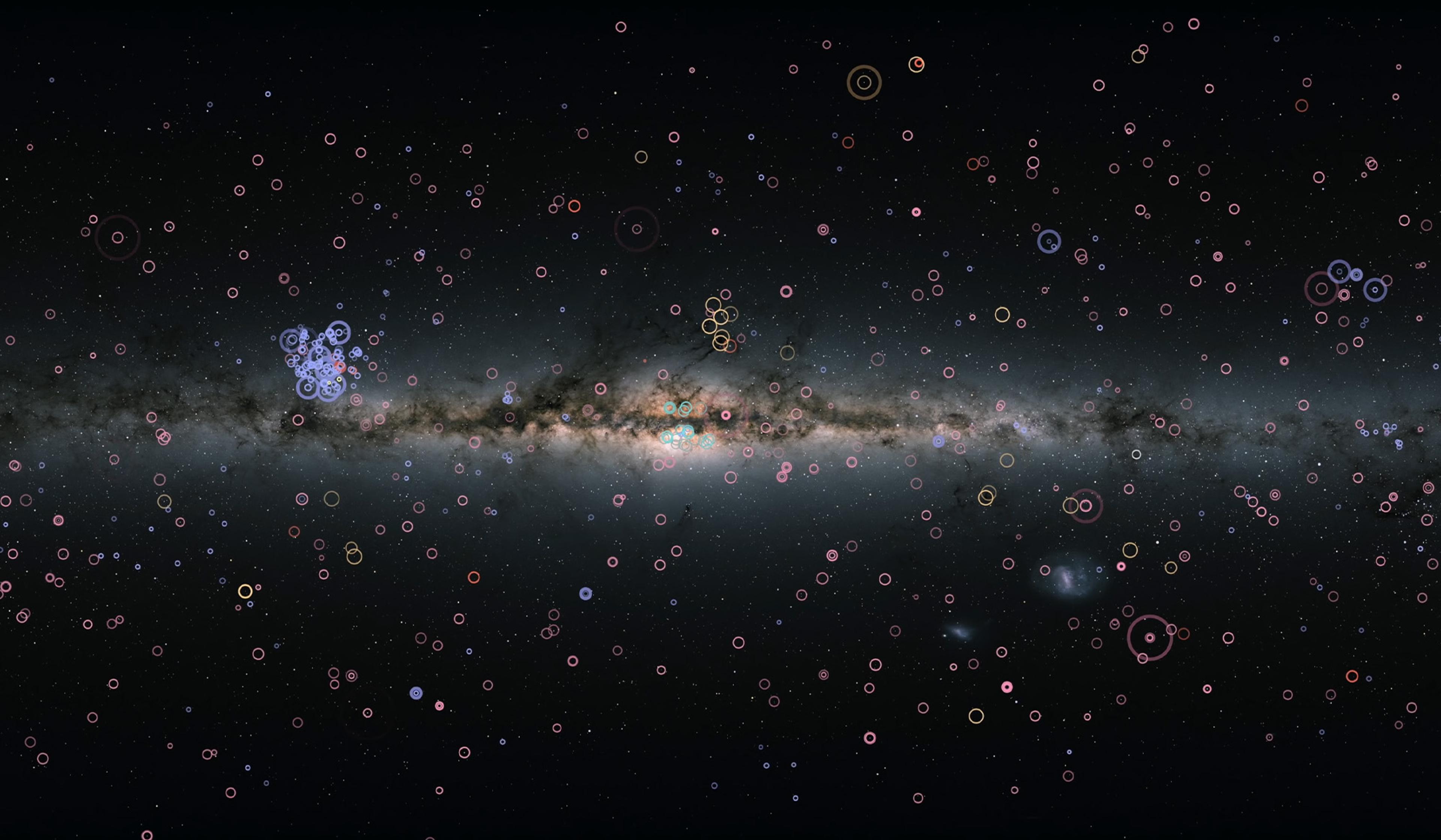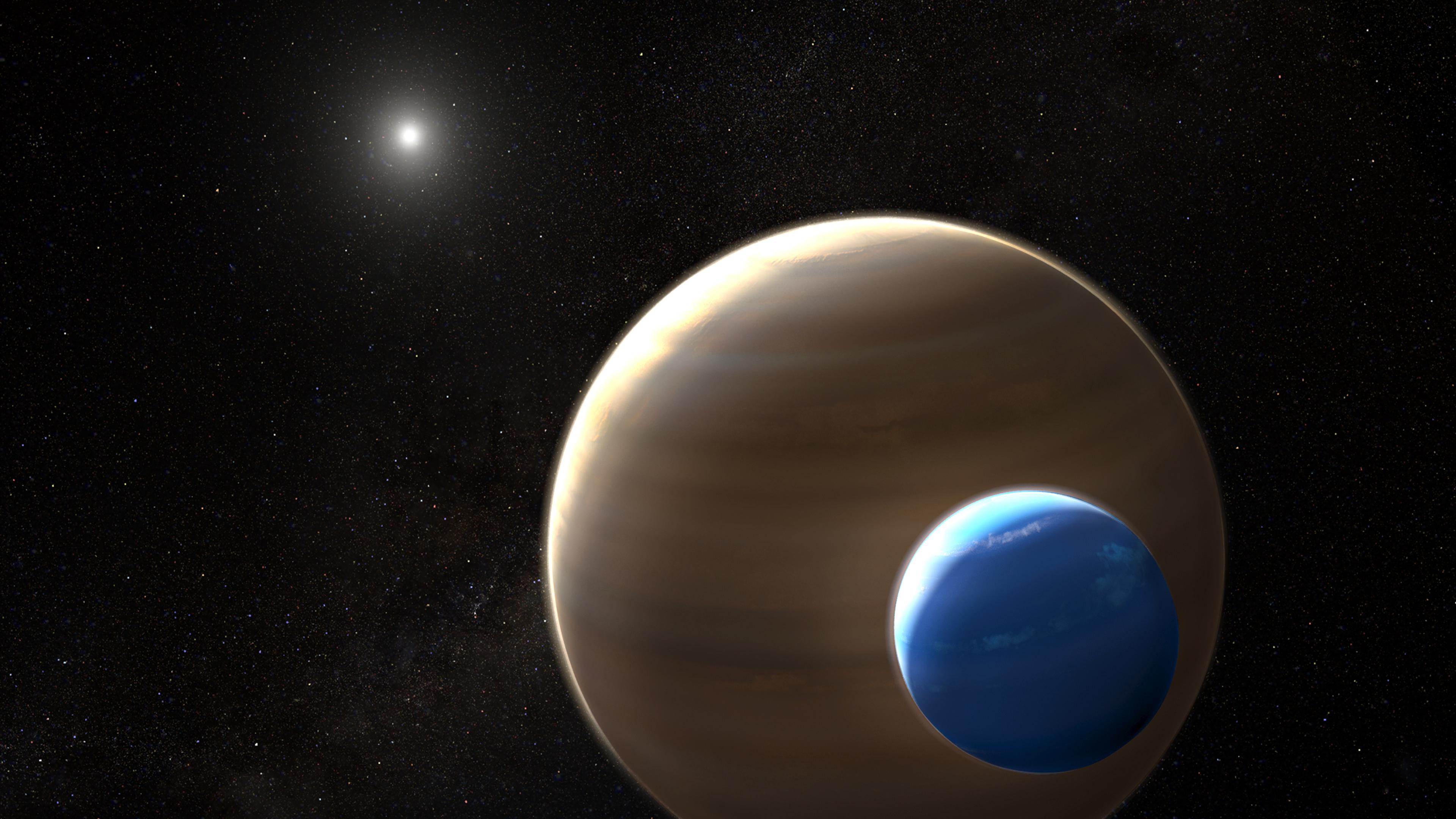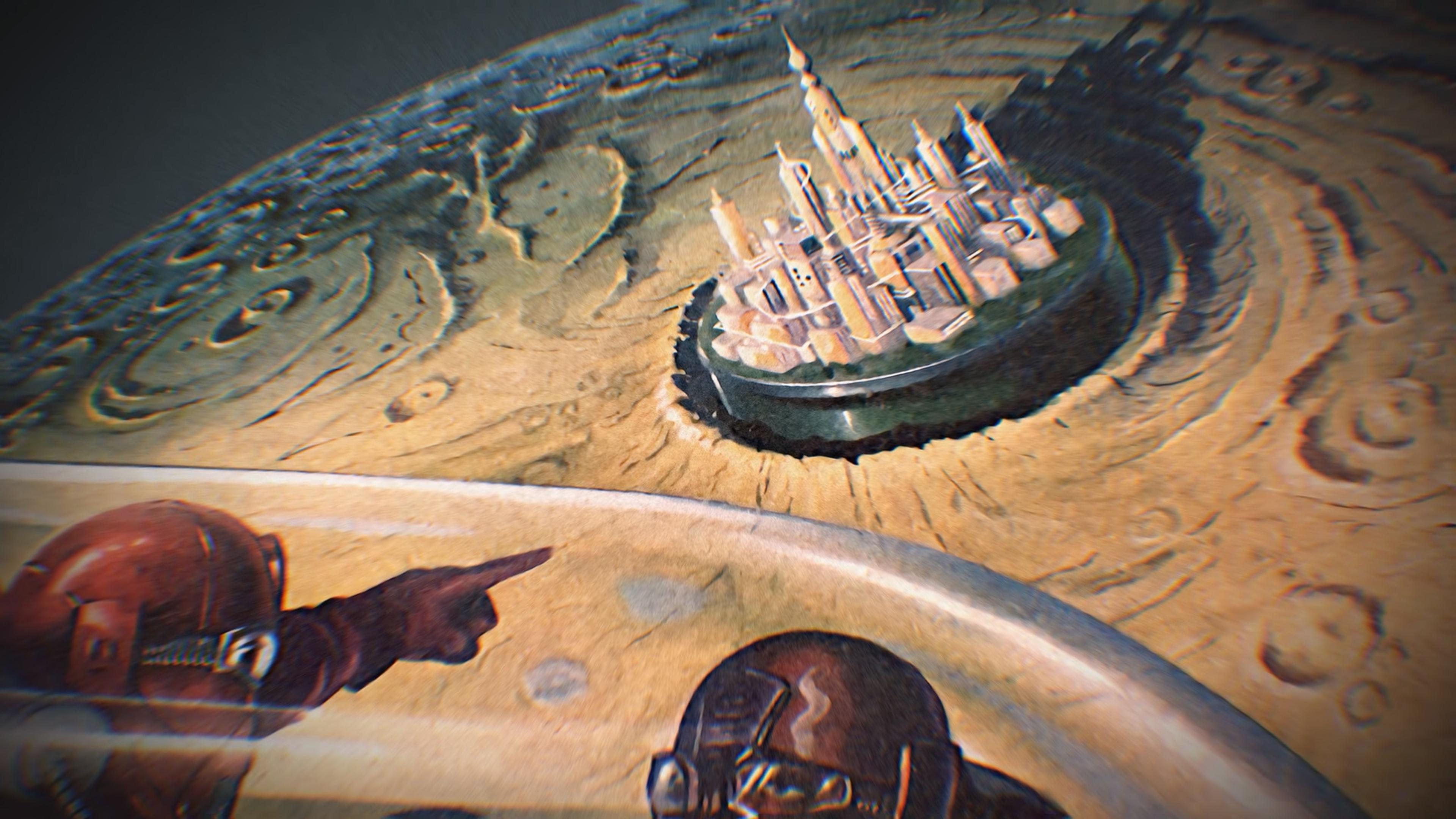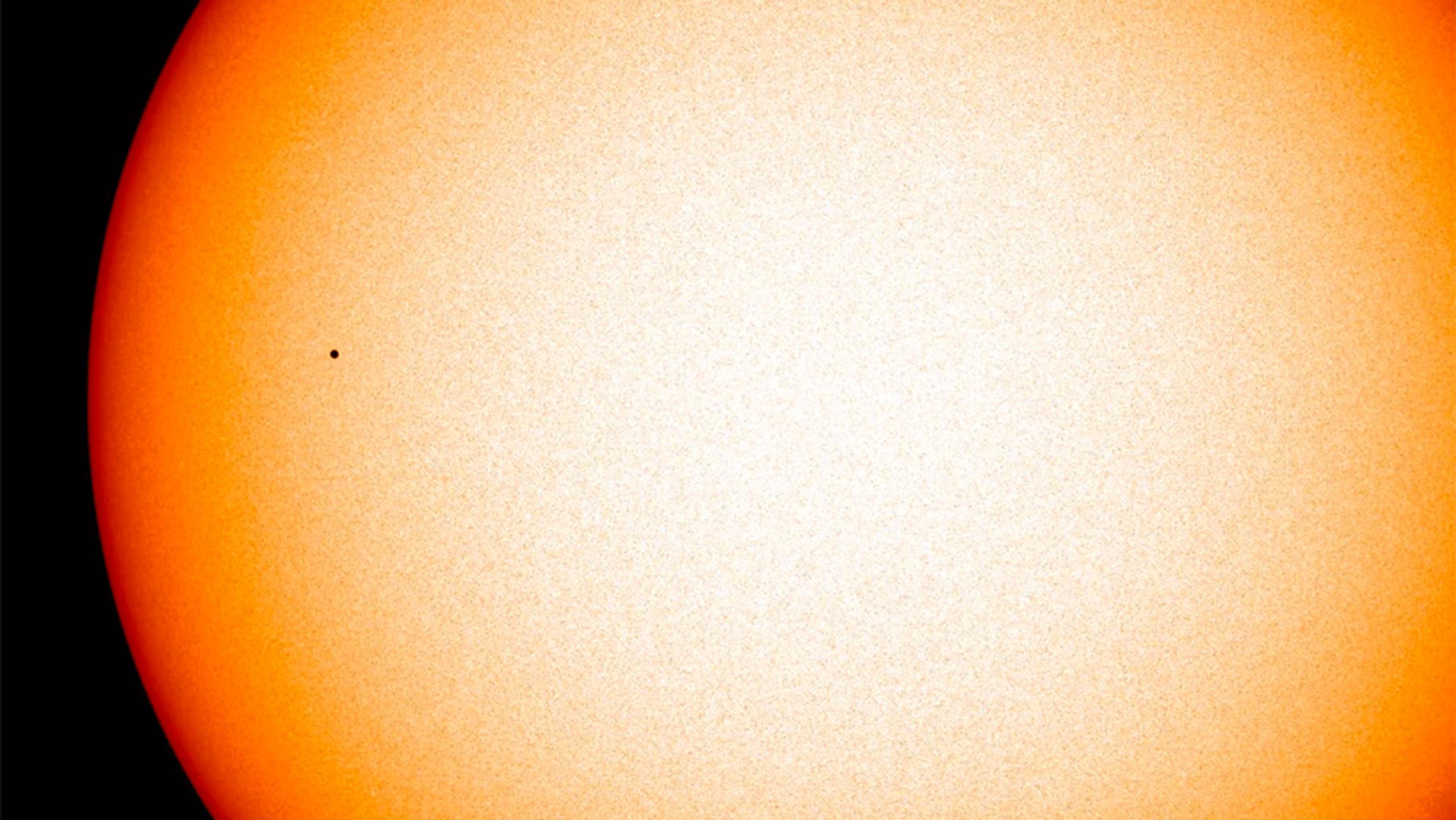The cool red dwarf star TRAPPIST-1, which is located some 40 light-years from Earth, was first discovered in 1999. Its seven known exoplanets, which are all close to Earth-like in size, were discovered in 2016 and 2017. In this video, the French American pianist Dan Tepfer harnesses what he calls the ‘unusually harmonious’ orbital ratios of these planets for a unique musical performance. He introduces the planets one at a time on his keyboard, with each body’s orbit captured in both the frequency and rhythm of the notes. As he plays, visuals of the star system and his accompanying improvisations swirl around the screen, making for a transfixing melding of art and science. For more from Tepfer, watch his work TriadSculpture.
The rhythms of a star system inspire a pianist’s transfixing performance
Video by Dan Tepfer

videoAstronomy
From zero to 5,000 – music and visuals express 30 years of exoplanet discoveries
1 minute

videoSpace exploration
Burning ice, metal clouds, gemstone rain – tour the strangest known exoplanets
31 minutes

videoAstronomy
Why exomoons could be astronomy’s next big breakthrough
35 minutes

videoAstronomy
Close encounters of a different kind – what if Venus, Neptune or Saturn hovered close by?
2 minutes

videoAstronomy
Life is durable and Earth-like planets aren’t rare. So where are all the aliens?
6 minutes

videoSpace exploration
Embark on an operatic, interactive journey to a witness the birth of a star
6 minutes

videoAstronomy
The history of astronomy is a history of conjuring intelligent life where it isn’t
34 minutes

videoSpace exploration
Mind-bending speed is the only way to reach the stars – here are three ways to do it
5 minutes

videoAstronomy
Watch the rare, awesome spectacle as Mercury passes between the Earth and Sun
1 minute